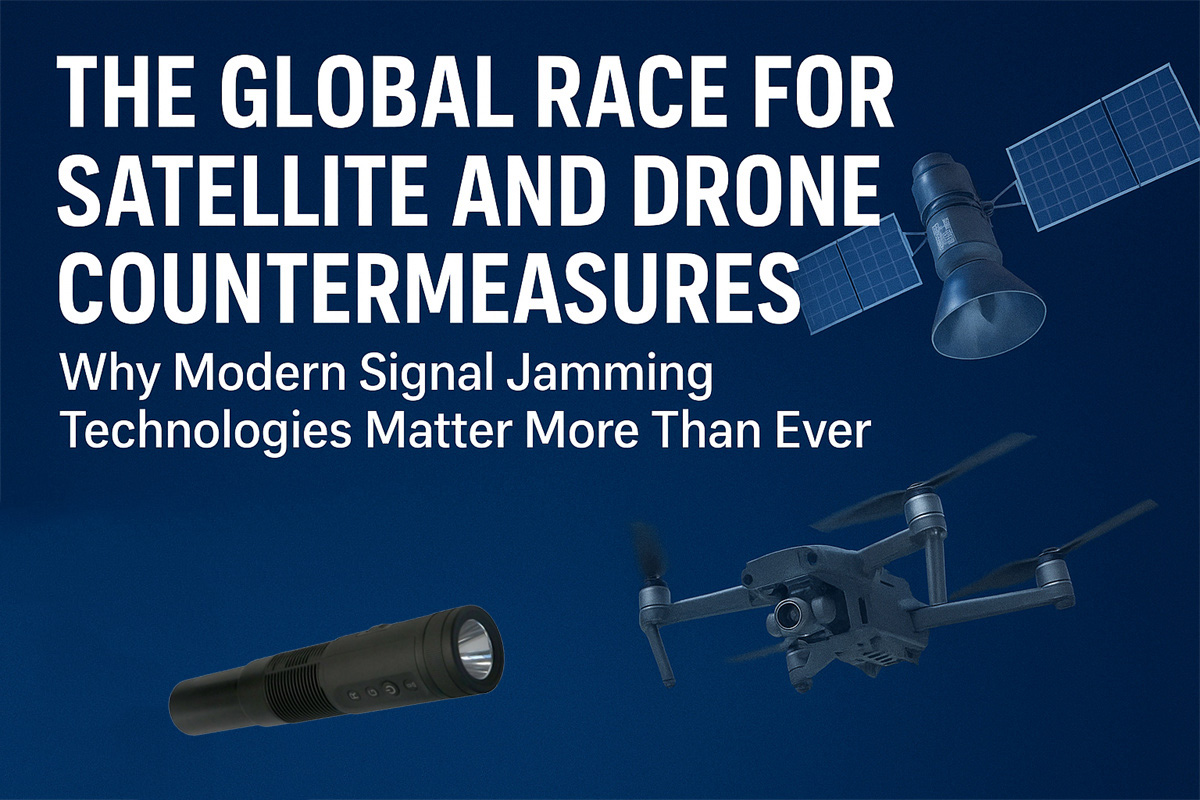As global conflict zones evolve and unmanned systems dominate modern battlefields, nations are accelerating the development of advanced countermeasure technologies-especially satellite jammers and anti-drone defenses. A series of recent announcements from the United States, the United Kingdom, and Europe reveals a clear trend: the new era of warfare is defined not by firepower alone, but by the ability to control, disrupt, or deny enemy information networks.
Below is an in-depth look at several major developments and what they mean for global security, followed by insights into why signal-jamming technologies are now a critical safeguard for both military and civilian environments.
U.S. Space Force Unveils a New Ground-Based Satellite Jamming System
The United States Space Force recently revealed a next-generation ground-based satellite communication disruption system designed to temporarily disable enemy satellites during periods of conflict. Unlike kinetic anti-satellite weapons-such as Russia’s rumored space-based nuclear capability-this system uses non-destructive electromagnetic interference to neutralize satellite communications.
Key Features of the New U.S. System
- 24 compact jamming modules capable of simultaneously disrupting multiple hostile satellites.
- Designed to prevent satellite-based intelligence collection before an attack occurs.
- A “reversible” form of interference-disabling, but not destroying, satellites.
- Intended as a strategic, controlled alternative to nuclear or kinetic anti-satellite warfare.
This technology highlights a crucial shift: space is now a competitive battlefield, and dominance increasingly depends on the ability to protect communications while denying an adversary’s ability to see, hear, or coordinate.
A Surge in Global Anti-Drone Investments
As drone usage expands-from reconnaissance to precision strikes-countries are rapidly upgrading their low-altitude defense capabilities. What used to be a niche technology is now a priority procurement category for militaries worldwide.
Modern drone threats include:
- Affordable consumer drones used for surveillance
- FPV kamikaze drones deployed in swarms
- Fiber-optic drones that bypass radio-frequency jamming
- Autonomous drones with AI-driven navigation
This escalation has driven global demand for multi-layer Anti-Drones Jammer solutions, combining radar, optics, AI-based tracking, and high-power RF jammers.
The UK-U.S. “Vanaheim Project”: A New Generation of Anti-Drone Defense
Announced at an international airshow in March 2025, the Vanaheim Project represents a major joint initiative between the UK Ministry of Defence and the U.S. Army to accelerate next-generation anti-drone systems.
One of its flagship concepts is the Sentinel Integrated Aerial Defense System, developed by German company Alpine Eagle.
How the Sentinel System Works
Instead of relying solely on ground sensors, Sentinel uses:
- A network of small patrolling drones to create a persistent surveillance layer.
- High-precision radar, optical, and thermal sensors to detect tiny aerial targets.
- AI-driven computer vision to analyze flight behavior, speed, and patterns.
- Threat differentiation capability-distinguishing drones from birds or civilian objects.
Key Advantage: Effective Against Non-RF Drones
Unlike traditional jamming-based countermeasures, Sentinel can detect and track:
- Fiber-optic tethered drones
- Highly shielded drones with jamming-resistant systems
- Low-emission or silent drones
Its strength lies in multi-spectrum detection, not just RF interference.
Why Signal Jammer Still Matters More Than Ever
Despite the rise of AI and advanced sensing, RF jamming remains one of the most effective and practical countermeasures in both military and civilian environments.
1. Protection Against Unauthorized Surveillance
Whether from:
- rogue drones
- spy devices
- concealed microphones
- satellite positioning trackers
Jammers can create controlled “no-signal zones” that block communication and prevent data leakage.
2. Safeguarding Military and Government Infrastructure
Critical facilities use jamming systems to:
- prevent foreign intelligence collection
- secure communication channels
- disrupt enemy drone operations
- protect troop movement from GPS-based tracking
3. Rising Commercial and Civilian Demand
Outside the battlefield, more organizations are adopting jammers for:
- conference rooms
- examination centers
- prisons
- VIP protection
- low-altitude drone exclusion zones
As drones become cheaper and more capable, the need for reliable signal-blocking solutions is higher than ever.


